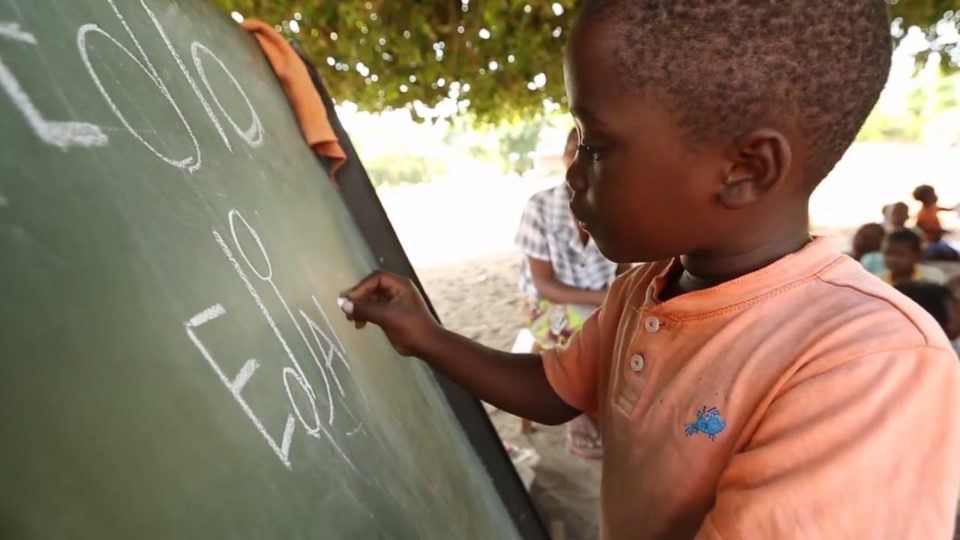A Paper Presented By Jidechukwu Angela Nwabueze At Opinions From Africa Research Department (#ResearchwithPet)- During An Online Conference On Learning Disabilities Encountered By Children.
Host – Jidechukwu Angela Nwabueze
INTRODUCTION
Learning a language takes time, and children vary in how quickly they master milestones in language and speech development.
Typically, some developing children may have problems in language development, and demonstrates difficulties pronouncing and writing some sounds and words, acquiring vocabulary, and learning the grammatical rules of language.
When these difficulties encountered by children in pronouncing and writing sounds and words are not looked into, the deficits might be become severe, making it difficult for the child to express himself in both oral and written forms, a language disorder popularly referred to as oral/written language disorder.
Though a language disorder, oral/written language disorder is seen as a learning disability because the disorder does not just affect the learning of a language, but equally makes it harder to learn certain life skills.
Consequently, language disorders are common cause of students’ academic struggles because weak language skills impede comprehension and communication, which are the basis for most school activities.
Definition of major concepts in the topic of discussion:
LANGUAGE:
According to Ogbodo (2010), language is a communicative medium capable of expressing ideas and concepts. Robert Hall in the book, An Essay of Language defines language as the institution whereby humans communicate and interact with each other by means of habitually used oral, auditory, and arbitrary symbols.
ORAL LANGUAGE:
This is the system through which we use spoken words to express knowledge, ideas, and feeling (Audet, 2015). It consists of six areas namely; phonology (concerned with the systematic organization of sounds in spoken language and signs in sign language), syntax (understanding of word order and grammatical rules), grammar (study of the way words are used to make sentences), morphology (study of words, how they are formed, and their relationship to others words in the same language), vocabulary discourse, and pragmatic (study of how context affects meaning. That is, how sentences are interpreted in certain situations).
WRITTEN LANGUAGE:
This is the representation of a spoken or gestural language by means of a writing system. According to Newman (2013), written language is the written form of communication which includes both reading and writing. It requires basic language abilities such as phonological processing (understanding that words are made of discrete sounds and associating letters with the sounds), vocabulary, and syntax.
LANGUAGE DISORDER:
This is a communication disorder in which a person has persistent difficulties in learning and using various forms of language. According to Badii (2018), language disorders tend to manifest in two different ways- receptive language disorders (where one cannot properly comprehend language) and expressive language disorders (where one cannot properly communicate their intended message).
Here, let’s explore the topic of our discussion- Oral/written language disorder
What is Oral/Written Language Disorder?
Oral/written language disorder involves a significant impairment in putting thoughts into speech, fluent word recognition, reading comprehension, written spelling, or written expression (Ehri, 2000; Kamhi & Catts, 2012).
Individuals with Oral/Written language Disorder struggle with understanding and/or expressing language in both oral and written forms. That is, they often exhibit specific language impairment related to deficits in semantic processing (encoding the meaning of words) and syntactic processing (understanding the order of words and how that can change meaning).
(Since, the topic of discussion, contains two broad topics, that’s oral language disorder and written language disorder, let’s take it one at a time)-we begin with oral language disorder.
ORAL LANGUAGE DISORDER
A child diagnosed of oral language disorder will have difficulty understanding and processing verbal information. For instance, when an information is presented to the child in form of what he/she is to remember for home or school, it would be difficult for the child to even understand what was said, let alone remember it.
Thus, a child with oral language disorder is likely to have difficulty following instructions, especially if the instructions are only given orally and if they contain multiple words and steps.
POSSIBLE SIGNS OF ORAL LANGUAGE DISORDER
Signs in terms of Phonology (concerned with the systematic organization of sounds in spoken language and signs in sign language)
- Delays in oral language development.
- Tendency to vocalize less and use less varied syllables than those of same-age.
- Difficulties learning the speech sound system of language, resulting in poor repetition of single and multisyllabic non-words.
- Limited phonological awareness in rhyming, sound deleting, segmentation, and blending.
Signs in terms of morphology and syntax (concerned with the understanding of word order and grammatical rules, study of words, how they are formed, and their relationship to others words in the same language)
- Late acquisition of word combinations.
- Errors of omission occurring more frequently than errors of misuse.
- Difficulty comprehending grammatical morphemes (smallest meaningful unit in a language).
- Difficulty identifying and correcting grammatical errors.
- Difficulty identifying parts of speech.
Signs in terms of semantics (concerned with meaning of a word, phrase, or text)
- Slower rate of vocabulary development.
- Late acquisition of first word and word combinations.
- Poor fast- mapping of a new word to its referent.
- Difficulty understanding new words, particularly action words.
- Word-finding difficulties.
- Use of filler words like “um” to take up time while the child is searching for a word.
- Difficulty monitoring comprehension.
- Difficulty understanding questions and following directions that are heard.
- Difficulty paraphrasing information.
- Poor organization and comprehension of narratives and expository discourse.
Signs in terms of pragmatics (concerned with the study of how context affects meaning. That is, how sentences are interpreted in certain situations).
- Difficulty initiating play with peers due to their inability to initiate and sustain conversations. Thus, there is perceived immaturity in relation to same-age peer due to the difficulties they encounter in expressing ideas, feelings, and personal experiences.
- Limited classroom discourse skills like turn-taking, language productivity and complexity, making contributions to classroom discussions.
- Difficulty using language to sequence events of a story.
Behaviorally, children with Oral Language Disorders may;
- Exhibit behavioural difficulties, including hyperactivity and attention difficulties (Dockrell, Lindsay, Palikara, & Cullen, 2007).
- Demonstrate behavioural reticence like withdrawal, wariness, and shyness that can affect initiation of close relationships in adolescence (Fujiki, Spackman, Brinton, & Hall, 2004).
- Have difficulty inferring emotional reactions of others (Ford &Miloski, 2003).
- Have difficulty judging when it is appropriate to hide emotions/feelings (Brinton, Spackman, Fujiki, & Ricks, 2007).
- Have difficulty regulating emotions (Fujiki, Brinton, & Clarke, 2002).
- Have poor social self-esteem (Marton, Abramoff, &Rosenzweig, 2005).
- Be at risk for bullying and other forms of abuse (Blood, 2014).
- Have difficulty forming and maintaining close social relationship as adolescents (Wadman, Durkin, & Conti- Ramsden, 2011).
(Having explored oral language disorder, let’s look into written language disorder)
WHAT IS WRITTEN LANGUAGE DISORDER?
This is a significant impairment in fluent word recognition. That is reading decoding (ability to transform orthographic letters into patterns of a corresponding spoken word), and sight word recognition (Ehri, 2000; Kamhi & Catts, 2012).
Written language disorder may occur in the presence of other conditions such as spoken language disorder, Attention Deficit/Hyperactivity Disorder (ADHD), emotional disability, intellectual disability, autism spectrum disorder and so on.
POSSIBLE SIGNS OF WRITTEN LANGUAGE DISORDER
- Difficulty with the systematic organization of sounds in spoken language and signs in sign language.
- Difficulty with the understanding of word order and grammatical rules, study of words, how they are formed, and their relationship to others words in the same language.
- Difficulty forming stable associations with the orthographic representations of words in prints.
- Difficulty using syntax (arrangement of words and phrases to create well-formed sentences in a language) and cohesive devices (linking words) to represent relationships among ideas.
(Some questions in the topic that require answers)
Can Oral/Written language disorder be diagnosed?
Yes, it can be diagnosed. Remember, oral/written language disorder has possible signs. Those possible signs listed above can be a clue.
How then is oral/written language disorder diagnosed?
Speech and language pathologists can administer standardized tests to gauge a child’s ability to both comprehend and express language.
However, for a child to be diagnosed with a language disorder, both written and oral, that child must have deficits in age-appropriate communication, including reduced vocabulary, limited sentence structure, and impairment in using language to communicate information or carry out a conversation.
What could be the possible causes of oral/written language disorder?
The causes of oral/written language disorder are often not known, but children at risk of having a language disorder include those with;
- A family history of language disorders
- Premature birth
- Low birth weight
- Hearing loss
- Autism
- Genetic disorders such as down syndrome
- Brain injury
Can Oral/Written language disorder be treated?
Yes, it can be treated though some severe cases of the disorder might not be treated. However, the use of therapies can be used to help a child diagnosed with oral/written language disorder cope with the disorder. The following are treatments that can be given to a child diagnosed with oral/written language disorder:
LANGUAGE THERAPY:
- This is the most common treatment for language disorder. Here, the child may participate in one-on-one treatment sessions with a speech therapist or attend group sessions. This treatment however, depends on the age of the child, cause of the disorder, and extent of the condition.
PSYCHOLOGICAL THERAPY:
- This involves counseling sessions to address emotional or behavioural issues of a child diagnosed with oral/written language disorder
HOME CARE OPTIONS:
This includes activities like;
- Speaking clearly, slowly, and concisely when asking your child questions.
- Waiting patiently as your child forms a response while having conversations with the child.
- Keeping the atmosphere relaxed for the child to reduce anxiety.
- Asking your child to put instructions in their own words after giving an explanation or command.
I am a classroom teacher and I have like three to five children facing oral/written language disorder. No matter how many times I teach them, they don’t grasp. Is school really meant for them?
Yes, school is actually meant for them. Such children when understood and taught in their own style end to perform exceedingly well. Thus, if a child cannot learn the way we teach, maybe we should teach the way they learn.
According to Robert John Meehan, “Every child has a different learning style and pace. Each child is unique, not only capable of learning but also capable of succeeding”. As a classroom teacher, the following interventions as suggested byRoth and Worthington (2015) can help you teach a child diagnosed with oral/written language disorder:
INTERVENTION FOR PRESCHOOLERS (AGES 3-5)
- Increasing consonant repertoire.
- Enhancing phonological awareness skills such as rhyming, blending, and segmenting spoken words.
- Increasing size of vocabulary, including basic concepts of vocabulary.
- Increasing understanding and use of a wider range of semantic relationships ( agent-action, agent- object, possessor- possession etc).
- Increasing sentence length and complexity.
- Increasing the use of varied sentence types.
- Increasing flexibility of language for various contexts.
- Using imaginative play activities to practice newly acquired language skills.
- Improving conversational skills like turn taking, topic maintenance, topic shifts, initiating and maintain communication etc.
INTERVENTION FOR ELEMENTARY SCHOOL CHILDREN (AGES 5-10)
- Improving knowledge of vocabulary.
- Improving depth of vocabulary understanding and use including figures of speech, abstract vocabulary, changes in meaning with context, and subtle differences in meaning.
- Monitoring comprehension, requesting clarification, and paraphrasing information.
- Increasing the use of more advanced morphology.
- Increasing the ability to understand and formulate more complex sentence structures.
- Using language in various contexts to convey clarification, persuasiveness etc.
- Improving the ability to make relevant contributions to classroom discussions.
The focus of intervention here is to help children acquire language skills needed to learn and succeed in a classroom environment.
INTERVENTION FOR ADOLESCENT STUDENTS (AGES 11-SECONDARY SCHOOL)
Since the focus is on how to learn and not on what to learn, the interventions to be used here should be instructional strategies for using
- Context to deduce meaning and infer, and identify main ideas.
- Deciphering of morphologically complex words associated with different academic course work.
- Checklists and graphic organizers to plan assignments. For example book reports, presentations, and research papers.
- Spell check and grammar check to edit written work composed in an electric format.
- Digital technologies such as internet, collaboration sites etc to access and evaluate information.
Interventions here are geared towards teaching ways to compensate language deficits
In conclusion, that a child is diagnosed of oral/written language disorder does not mean that the child is worthless. The child simply needs to be provided with accommodations that would enable him/her cope and learn.
REFERENCES
American Speech-Language Hearing Association (ASHA). Spoken language disorders. Retrieved from https://www.asha.org/practice-portal/clinical-topics/spoken-language-disorders
American Speech-Language Hearing Association (ASHA). Written language disorders. Retrieved from https://www.asha.org/practice-portal/clinical-topics/written-language-disorders
Badii, C. (2015). Language disorder. Retrieved from https://www.healthline.com/health/mixed-receptive-expressive-language-disorder.
Blood, G. (2014). Bullying be gone. Retrieved from https://www.asha.org/practice-portal/clinical-topics/spoken-language-disorders
Brinton, B., Spackman, M.P., Fujiki, M., & Ricks, J. (2007). What should Chris say? The ability of children with specific language impairment to recognize the need to dissemble emotions in social situations. Journal of Speech Language and Hearing Research, 50 (3): 798-811.
Dockrell, J., Lindsay, G., Palikara, O., & Cullen, M. (2007). Raising the achievement of children and young people with specific language and communication needs and other special educational needs through secondary school to work and college. Retrieved from https://journals.sagepub.com/doi/10.1177/0265659011398671
Ehri, L.C. (2000). Learning to read and learning to spell: Two sides of a coin. Topics in Language Disorders, 20 (1), 19-36.
Ford, J.A., & Milosky, L.M. (2003). Inferring emotional reactions in social situations: Dfferences in children with language impairment. Journal of Speech Language and Hearing Research, 46 (1):21-30.
Fujiki, M., Brinton, B., & Clarke, D. (2002). Emotion regulation in children with specific language impairment. Language, Speech, and Hearing Services in Schools, 33 (2): 102-111.
Fujiki, M., Spackman, M., Brinton, B., & Hall, A. (2004). The relationship of language and emotion regulation skills to reticence in children with specific language impairment. Journal of Speech Language and Hearing Research, 47 (3): 637-646.
Kamhi, A.G., & Catts, H.W. (2012). Language and reading disabilities, 3rd edition. Baltimore, MD: Pearson.
Marton, K., Abramoff, B., & Rosenzweig, S. (2005). Social cognition and language in children with specific language impairment. Journal of Communication Disorders, 38 (2):143-62.
Wadman, R., Durkin, K., & Conti-Ramsden, G. (2011). Close relationships in adolescents with and without a history of specific language impairment. Language, Speech, and Hearing Services in Schools, 42 (1): 41-51.




